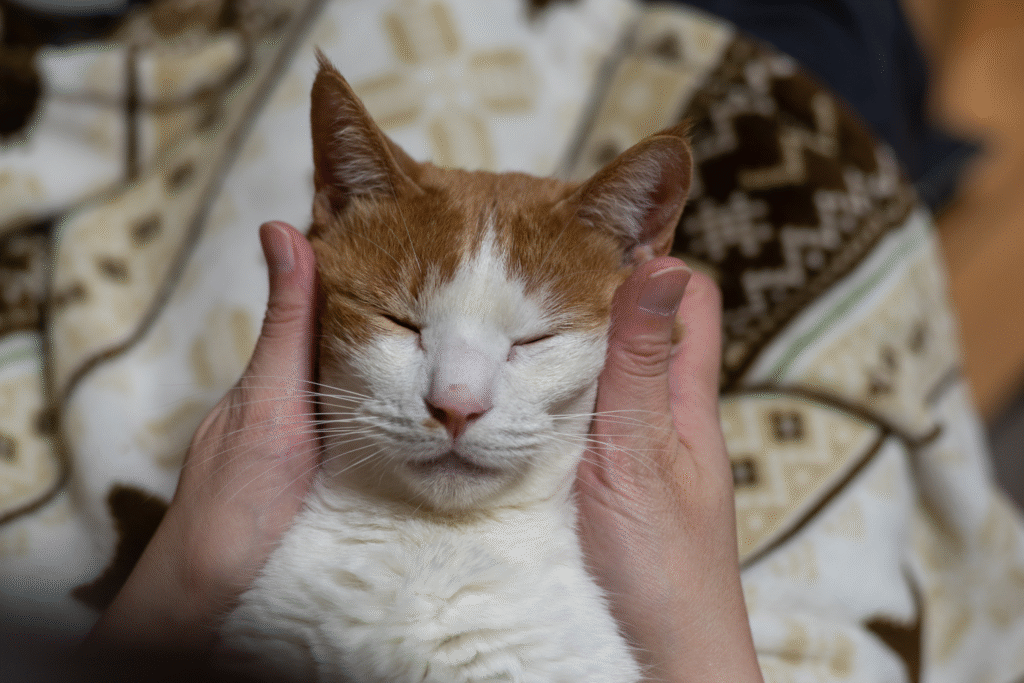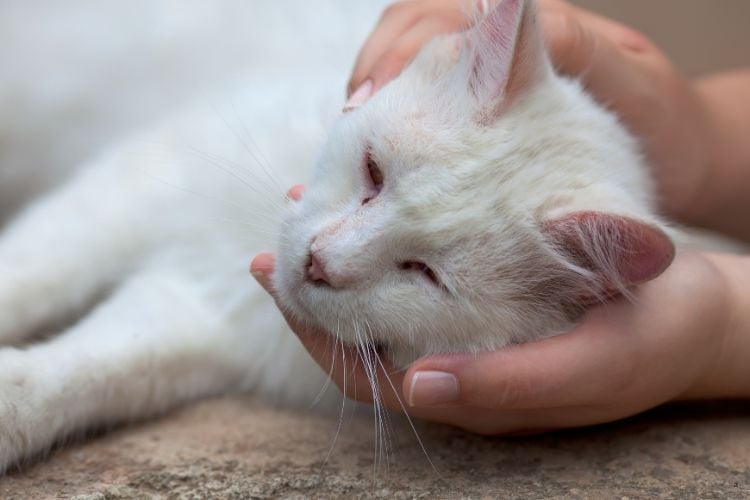Hidden threats can cross the pet human boundary.

Cats are cherished companions, but they can also carry microscopic hitchhikers capable of jumping to humans under the right conditions. Many of these parasites cause no symptoms in healthy cats but may become harmful when transmitted to people. Understanding the risks allows pet owners to protect both themselves and their pets through awareness and good hygiene practices.
This article explores ten scientifically recognized parasites that can pass from cats to humans. Each has a unique route of infection and distinct effects, yet all share one truth, our close bond with cats sometimes invites invisible passengers we never notice.
1. The roundworm Toxocara cati can cause larva migration.

Toxocara cati is a common roundworm found in cats that sheds microscopic eggs through feces. When these eggs mature in soil, they can become infectious and spread through accidental ingestion. According to studies in veterinary parasitology, humans can develop a condition called visceral or ocular larva migrans when the larvae migrate through tissues, affecting organs such as the liver or eyes. In children, the infection can occasionally lead to inflammation or vision problems.
The larvae do not mature into adult worms inside humans, but their movement can trigger immune reactions. Regular deworming, handwashing, and cleaning litter boxes prevent most infections.
2. Hookworms like Ancylostoma cause skin irritation in humans.

Cats may carry hookworms that release larvae into soil, where they remain capable of penetrating human skin. Walking barefoot or gardening in contaminated areas can result in infection, as discovered by the Cornell Feline Health Center. The larvae enter the skin and cause winding red tracks known as cutaneous larva migrans. Though the infection is usually limited to the skin, it can cause intense itching and irritation.
These parasites cannot complete their life cycle inside humans, which limits the infection’s severity. Prevention depends on prompt veterinary deworming, keeping cats indoors, and maintaining clean, uncontaminated outdoor areas.
3. Giardia infects both cats and people through contaminated water.

Giardia is a microscopic protozoan parasite that affects the intestines of both cats and humans. Infection occurs when someone drinks contaminated water or ingests cysts from surfaces or soil. Research in zoonotic disease journals shows that Giardia cysts can survive for long periods in moist environments, making shared water bowls or unclean litter areas sources of exposure. Once ingested, the parasite causes diarrhea, bloating, and stomach discomfort in both species.
Cats and humans often reinfect each other if environments are not disinfected. Washing hands, disinfecting litter boxes, and avoiding untreated water are effective ways to stop transmission.
4. Toxoplasma gondii can be shed in cat feces.

Cats are the only animals where Toxoplasma gondii completes its life cycle. The parasite’s oocysts appear in cat feces and can become infectious after a few days in the environment. Humans who come into contact with contaminated litter or soil may contract toxoplasmosis, which can cause mild flu-like symptoms. The CDC reports that this infection can be severe during pregnancy, as it may harm the fetus or cause miscarriage.
For most healthy adults, toxoplasmosis remains mild and self-limiting. Still, cleaning litter boxes daily, wearing gloves when gardening, and washing hands afterward greatly reduce exposure risk.
5. Cryptosporidium can move from cats to people.

This protozoan parasite thrives in the intestines of many mammals, including cats, and can pass to humans through contaminated feces. Once ingested, it causes cryptosporidiosis, marked by watery diarrhea, nausea, and abdominal pain. Scientists studying zoonotic outbreaks have linked close contact between cats and their owners to sporadic human cases. Because Cryptosporidium oocysts resist many disinfectants, they can survive in moist litter boxes for weeks.
Most infections resolve without medical intervention, but for immunocompromised individuals, the symptoms can be prolonged or severe. Careful hygiene, prompt veterinary diagnosis, and frequent litter cleaning reduce this parasite’s spread effectively.
6. Flea borne Dipylidium tapeworms can infect humans.

Dipylidium caninum relies on fleas as an intermediate host. When cats groom themselves, they may swallow infected fleas and develop tapeworms. Children can also ingest these fleas accidentally, leading to mild gastrointestinal symptoms. The infection often goes unnoticed, though segments of the tapeworm may appear in stool. Veterinary parasitologists describe Dipylidium as an example of indirect zoonosis, meaning transmission occurs through another organism.
Breaking this cycle begins with flea prevention. Regular use of flea treatments, vacuuming carpets, and washing bedding help eliminate the insects that carry the larvae between species.
7. Bartonella henselae causes cat scratch disease in people.

Bartonella henselae is a bacterium spread when an infected cat scratches or bites a person. Fleas can carry the bacteria between cats, turning them into long-term carriers without visible illness. Humans may develop fever, fatigue, and swollen lymph nodes a few days after a scratch. The CDC recognizes this as cat scratch disease, a common but often mild zoonotic infection linked closely to flea populations.
Although it is bacterial rather than parasitic, Bartonella behaves similarly in its dependence on cats and fleas. Avoiding rough play and promptly cleaning scratches are the best precautions.
8. Sarcoptes scabiei mites can temporarily infest human skin.

The mite Sarcoptes scabiei occasionally affects cats and can cross to humans through direct contact. When this happens, it causes itchy red bumps or short-lived rashes on exposed skin. The infestation in people is usually temporary since the mites cannot reproduce effectively on human hosts. However, the irritation can be intense, leading to scratching that risks secondary infections.
Treating both the cat and the environment is essential for recovery. Bedding, furniture, and fabrics should be washed thoroughly. Consistent veterinary care ensures mites do not linger or spread to other pets or household members.
9. Chlamydia felis may occasionally infect human eyes.

Chlamydia felis primarily infects cats, producing eye discharge and respiratory irritation, but rare human cases have been documented. Transmission likely occurs through contact with eye secretions from an infected cat, especially when the person touches their own face afterward. Immunocompromised individuals or those in close contact with shelter cats face higher risk. The infection in humans generally causes mild conjunctivitis rather than systemic illness.
Because C. felis thrives in crowded cat environments, controlling outbreaks requires prompt treatment and separation of infected animals. Practicing hygiene when handling cats with eye problems prevents most transmissions.
10. Toxocara malayasiensis is an emerging feline roundworm species.

A lesser-known relative of Toxocara cati, Toxocara malayasiensis was identified in Southeast Asia and has since appeared in domestic cats elsewhere. Studies show it can shed hardy eggs in feces that become infectious after maturing in soil. Humans exposed to contaminated ground or fur can inadvertently ingest the eggs, allowing larvae to migrate through tissues. These migrations cause inflammation and immune reactions that mimic those seen in other Toxocara infections.
Though rare, its emerging status highlights how feline parasites evolve and spread globally. Routine deworming, sanitary litter disposal, and avoiding contact with stray cats remain practical safeguards.
